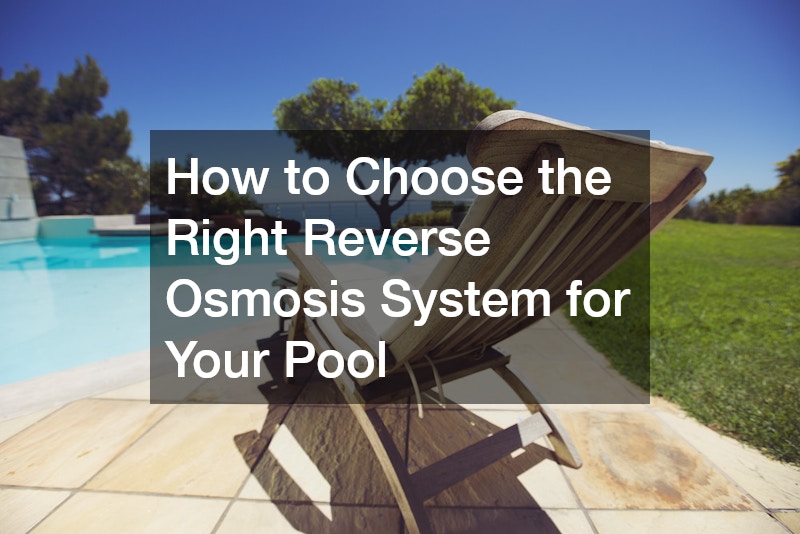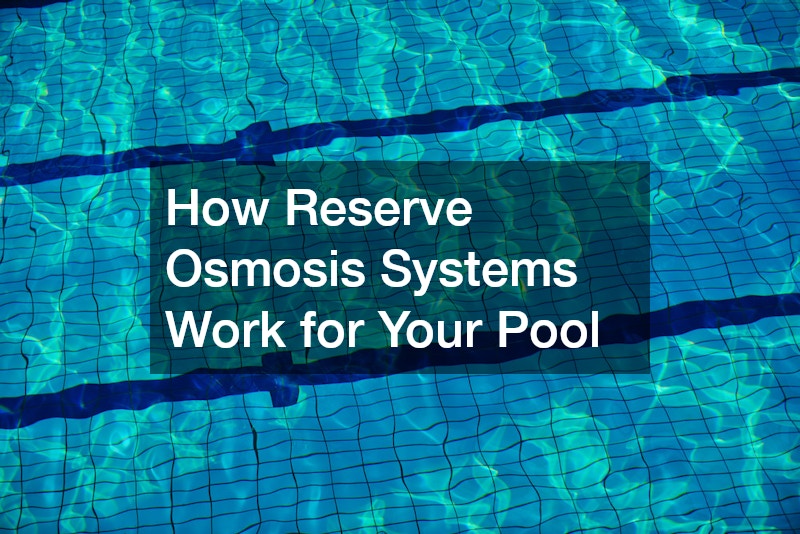Pool maintenance is crucial for ensuring a clean and healthy swimming environment, and reverse osmosis systems offer a revolutionary approach. By understanding how these systems function, pool owners can make informed decisions about their water maintenance strategies.
What is Reverse Osmosis and How Does it Benefit Pool Water?
Understanding the Reverse Osmosis Process
Reverse osmosis is a water purification technology that uses a semi-permeable membrane to remove ions, molecules, and larger particles from water. In pool water treatment, this process separates impurities and contaminants, leaving behind crystal-clear water.
The process involves applying pressure to overcome osmotic pressure, driving the water through the membrane. This methodology effectively removes impurities such as salt, chlorine, and organic materials that are found in pool water.
Reverse osmosis is ideal for maintaining optimal pool water chemistry, reducing the need for harsh chemicals. Pool owners find it particularly effective due to its ability to eliminate dissolved salts and other impurities, ensuring unparalleled water quality.
Advantages of Using Reverse Osmosis for Pools
Reverse osmosis significantly improves pool water quality by removing harmful contaminants and maintaining balanced chemical levels. This leads to healthier swimming conditions and reduces skin and eye irritation for swimmers.
The system also extends the life of your pool surfaces and equipment by minimizing exposure to corrosive salts and other damaging elements. The long-term benefits include reduced maintenance costs and enhanced durability of the pool infrastructure.
Using reverse osmosis for pools contributes to environmental sustainability by reducing the frequency of water replacement. This water conservation effort aligns with ecological goals while providing numerous advantages for pool owners.
How is Reverse Osmosis Different from Traditional Pool Filtration?
Comparison of Reverse Osmosis and Sand Filters
Sand filters are traditional filtration systems that trap debris and dirt by circulating pool water through a sand-filled chamber. However, reverse osmosis systems provide a more comprehensive purification by also removing dissolved salts and contaminants.
While sand filters can effectively remove larger particles, they fall short in eliminating microscopic impurities that reverse osmosis targets. Therefore, reverse osmosis offers superior filtration, resulting in cleaner and safer pool water.
Pool owners might find reverse osmosis to be a more efficient solution, especially in regions with hard water. Despite the higher initial investment, the enhanced water quality justifies the additional expense in the long run.
Difference Between Reverse Osmosis and Cartridge Filters
Cartridge filters use a physical barrier to trap debris and particles, much like sand filters, but with finer filtration capabilities. However, reverse osmosis stands out by employing membrane technology to remove dissolved impurities and contaminants beyond the reach of standard cartridge filters.
Unlike cartridge filters, reverse osmosis systems can purify water to an almost distilled level, dramatically improving water clarity and quality. This makes them particularly beneficial in environments where high water standards are a priority.
While both systems have their merits, choosing reverse osmosis depends on the desired water quality and maintenance goals. Its ability to deliver high-quality, contaminant-free water often outweighs the higher upfront cost for discerning pool owners.
Is Reverse Osmosis a Cost-Effective Solution for Pool Maintenance?
Long-term Cost Benefits of Reverse Osmosis
In the long term, reverse osmosis systems can lead to significant cost savings through reduced chemical usage and water replacement needs. The upfront cost can be offset by lower expenses on pool chemicals and maintenance over time.
Additionally, the enhanced longevity of pool surfaces and equipment further adds to the economic benefits, minimizing repair and replacement costs. These savings contribute to making reverse osmosis a financially sensible choice for pool owners.
Initial Investment and Maintenance Costs
The initial investment in a reverse osmosis system is typically higher than other filtration methods, which can be a deterrent for some pool owners. However, the long-term benefits and reduction in chemical use often justify these upfront costs.
Maintenance of reverse osmosis systems involves periodic membrane replacements and system checks, which can be manageable with proper planning. Overall, the investment is offset by the savings in chemicals and increased system efficiency.
What Are the Environmental Impacts of Using Reverse Osmosis for Pools?
Water Conservation Benefits
Reverse osmosis systems offer significant water conservation benefits by reducing the need for frequent pool water replacement. The system’s ability to purify and recycle pool water minimizes water waste, making it environmentally friendly.
This is especially advantageous in areas experiencing water scarcity, where resource conservation is critical. By effectively reducing water demand, reverse osmosis aligns with sustainable water management practices.
Environmental Challenges and Considerations
Despite its advantages, reverse osmosis does come with some environmental challenges, such as energy consumption and wastewater production. The desalination process requires substantial energy, which can be offset by using renewable energy sources.
Wastewater production, a byproduct of reverse osmosis, may require proper disposal methods to mitigate environmental impact. Proactive management strategies can address these challenges, ensuring eco-friendly operations.
How to Choose the Right Reverse Osmosis System for Your Pool
Factors to Consider While Choosing a System
When selecting a reverse osmosis system, pool owners should consider factors such as system capacity, water quality requirements, and installation space. Evaluating these criteria ensures the chosen system meets specific pool needs effectively.
Assessing the technical specifications, including membrane quality and energy efficiency, is crucial for optimal performance. Compatibility with existing pool infrastructure also plays a crucial role in the selection process.
Top Brands and Models in the Market
Several reputable brands offer high-quality reverse osmosis systems designed for pool maintenance, each with unique features and benefits. Brands like Pentair, Hayward, and Culligan are known for their reliability and efficiency in water purification.
These systems vary in size, capacity, and filtration capabilities, offering options for different pool sizes and water conditions. It’s important to evaluate customer reviews and consult with experts to find the best fit.








